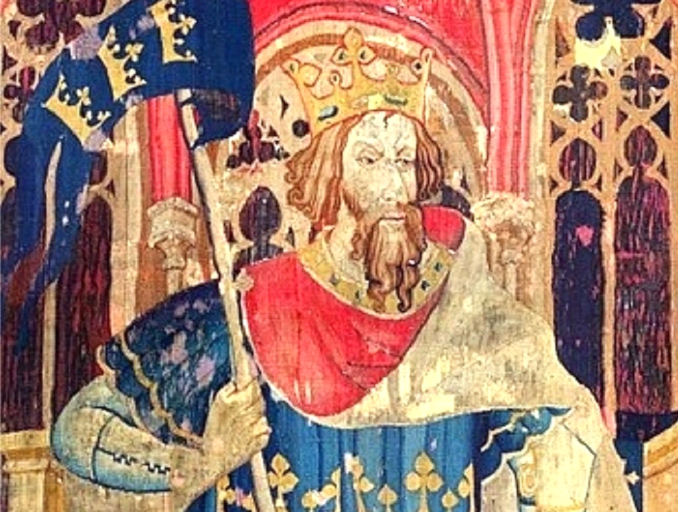Whether King Arthur really existed, there is still no certainty. Some historians say yes, but in any case, the heroic figure of the leader of the Britons is now preserved by literature, cinema, theater, and other forms of communication.
In this article, we selected curiosities about the life of the real King Arthur: the one who, supposedly, actually existed in the British Middle Ages.
How King Arthur became a legend

In the year 1138, a clergyman named Geoffrey de Monmouth wrote the chronicles ``History of the Kings of Brittany," placing Arthur as one of the kings in the line of British leaders. Although these writings are not considered a historical source, it was from them that Arthur Pendragon, son of Uther Pendragon, the British King responsible for leading one of the resistance to the Saxons (barbaric Germanic people of the East), became popular. Duchess of Cornwall.
King Arthur's birth context

At the time Arthur would have lived, towards the end of the 5th century, Great Britain was a divided territory: peoples with different customs (Christians versus Wiccans, Britons versus Saxons, etc.). Civil wars were common, and people were used to violence.
It was then useful to create a legendary figure, responsible for defending British lands from barbaric Saxons, and supposedly having Merlin himself, the most famous sorcerer in the world, as his master. And still having as one of the main missions the rescue of the Holy Grail, a holy chalice associated with Christ's figure.
It was then useful to create a legendary figure, responsible for defending British lands from barbaric Saxons, and supposedly having Merlin himself, the most famous sorcerer in the world, as his master. And still having as one of the main missions the rescue of the Holy Grail, a holy chalice associated with Christ's figure.
King Arthur's true battles

It is not known if this Arthur was really a king surrounded by twelve knights who gathered around a Round Table in Camelot's kingdom (present-day southwest of England). There is evidence, however, of two of the twelve battles won by the warrior.
Archaeologists have found an amphitheater and evidence of battles in the city of Chester, England.
Archaeologists have found an amphitheater and evidence of battles in the city of Chester, England.
Did Camelot really exist?

There is no king without a castle, right? In Arthur's case, Camelot was an entire city, or kingdom, and the mythical castle where he met with his knights and lived with Princess Guinevere.
There are some theories of where this kingdom would have been: Professor Peter Field, an expert in Arthurian literature, says it would be in the ancient Roman fort of Camulodunum, located in West Yorkshire, United Kingdom. Another hypothesis is that it would have been in Tintagel's village, in the Cornwall region of the United Kingdom, where archaeologists have recently discovered the remains of a large palace dating from the 5th or 6th century.
There are some theories of where this kingdom would have been: Professor Peter Field, an expert in Arthurian literature, says it would be in the ancient Roman fort of Camulodunum, located in West Yorkshire, United Kingdom. Another hypothesis is that it would have been in Tintagel's village, in the Cornwall region of the United Kingdom, where archaeologists have recently discovered the remains of a large palace dating from the 5th or 6th century.
King Arthur and Excalibur

One of the most famous passages of the Arthurian legends is the removal of the Excalibur sword from a stone, something that only a true king, like Arthur, could do.
This part of the story is also attributed to Geoffrey of Monmouth, who in his chronicles cited a magical Welsh sword called "Caliburnus," which was already common in several Celtic myths. Over time, it became the King's famous invincible sword. There is no historical evidence, however, that it actually existed, especially with supernatural powers
This part of the story is also attributed to Geoffrey of Monmouth, who in his chronicles cited a magical Welsh sword called "Caliburnus," which was already common in several Celtic myths. Over time, it became the King's famous invincible sword. There is no historical evidence, however, that it actually existed, especially with supernatural powers
The real Avalon in the story of King Arthur

In the mythical story, Arthur is betrayed by one of his knights, Mordred, and seriously injured in battle. He was then reportedly taken to Avalon's island, where he was received by the fairy Morgana and put on permanent rest to recover.
However, in real life, what is known about Arthur's burial is a possible grave discovered by the monks at Glastonbury Abbey in Somerset, England.
Recently, in the 1960s, archeologist and historian Ralegh Radford recovered the place, noting that it had actually been moved, but to this day, there is no sign of the bones found, nor of the cross.
However, in real life, what is known about Arthur's burial is a possible grave discovered by the monks at Glastonbury Abbey in Somerset, England.
Recently, in the 1960s, archeologist and historian Ralegh Radford recovered the place, noting that it had actually been moved, but to this day, there is no sign of the bones found, nor of the cross.






